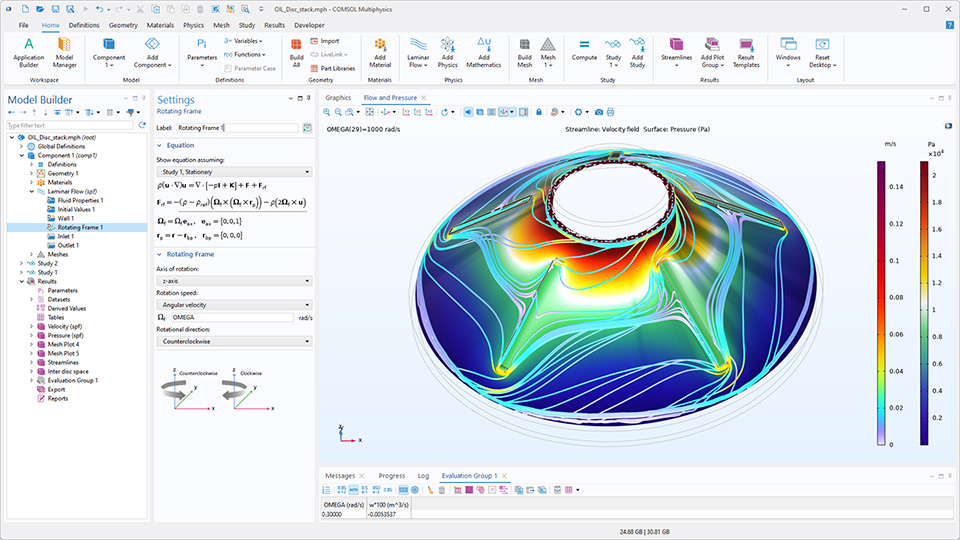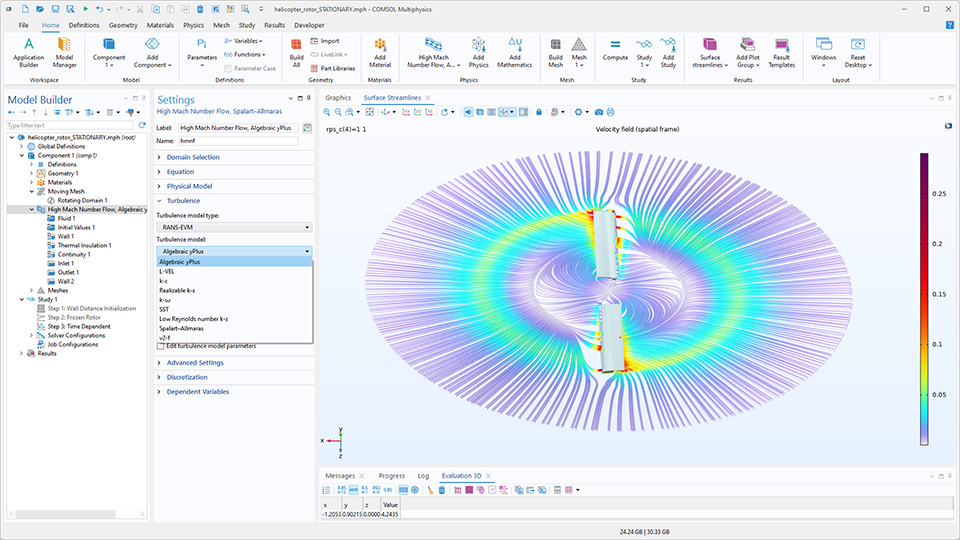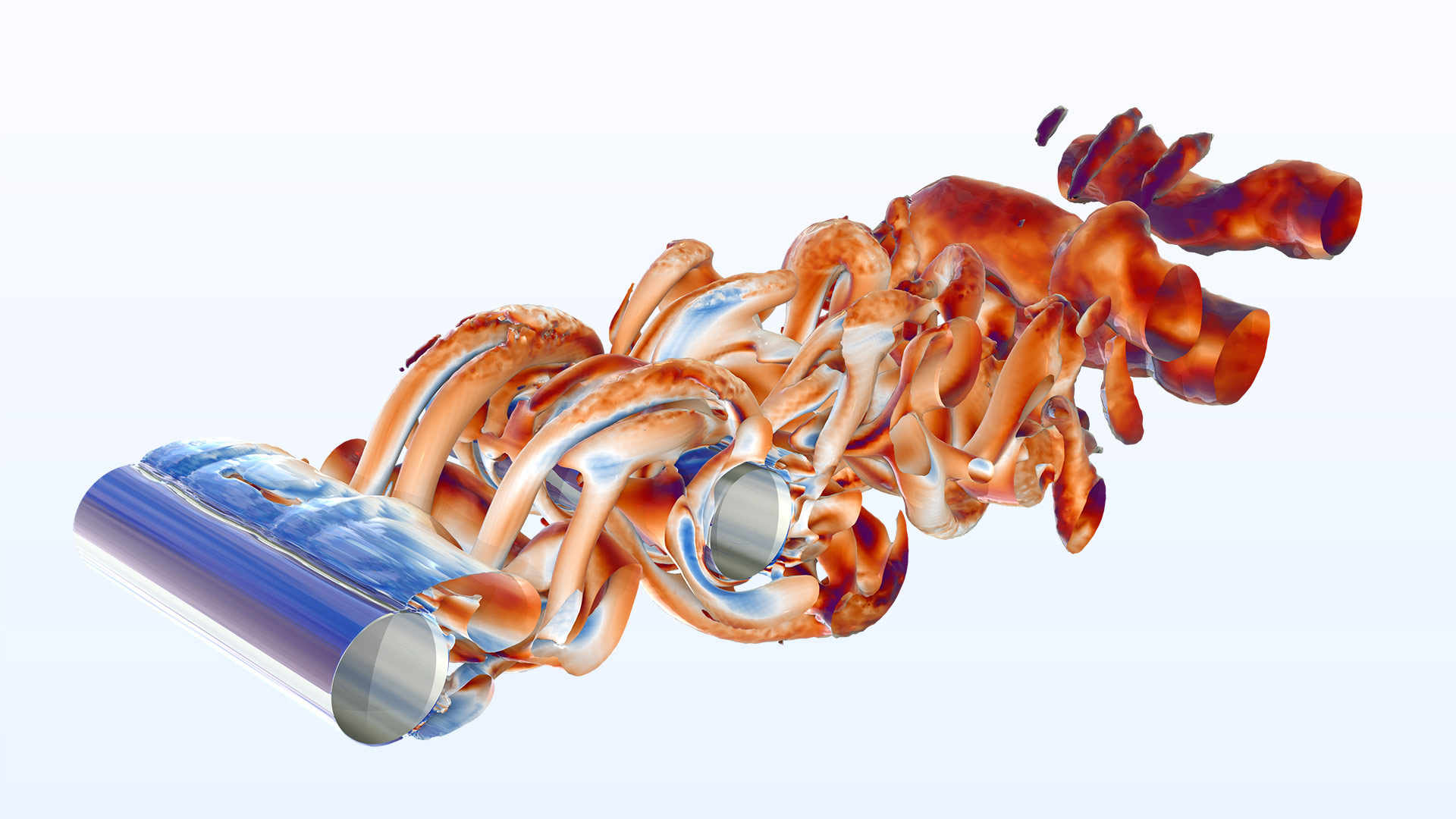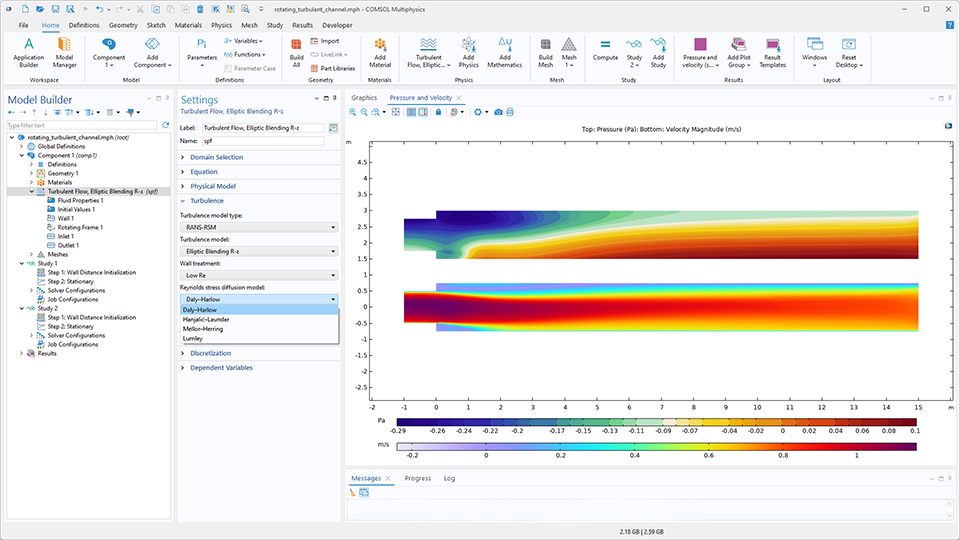Mixer Module Updates
For users of the Mixer Module, COMSOL Multiphysics® version 6.4 introduces an efficient alternative for modeling rotating domains, improved initial conditions for advanced turbulence models, and more. Read more about these updates below.
Rotating Frame Feature as an Alternative to Rotating Domains
The new Rotating Frame feature expresses fluid flow equations relative to a stationary or time-dependent rotating frame, providing an inexpensive alternative to rotating domains without having to add equations. It also offers options for using a reduced pressure formulation or including the hydrostatic pressure approximation for the centrifugal force.

Algebraic Turbulence Models for High Mach Number Flows in Rotating Machinery
The L-VEL and Algebraic yPlus turbulence models are now available for high Mach number flows in rotating machinery. These algebraic models are primarily used to generate optimal initial conditions for more advanced turbulence models, improving convergence and providing better starting points for time-dependent simulations, for example, when simulating turbomachinery.

Scale-Adaptive Unsteady Turbulent Flow Simulations
The Turbulent Flow, SST interface now supports scale-adaptive simulation (SAS) by incorporating the von Kármán length scale into the turbulence model. This approach resolves a broader range of turbulent scales and provides highly detailed flow fields. SAS can be applied in multiphysics contexts such as fluid–structure interaction, reacting flow, nonisothermal flow, and flow-induced noise, delivering more accurate and insightful results.

Elliptic Blending R-ε Turbulence Model with Improved Near-Wall Treatment
By blending expressions for the pressure–strain correlation and the turbulence viscous dissipation rate in the near-wall region with those in the bulk, the new Turbulent Flow, Elliptic Blending R-ε turbulence model provides accurate results for the Reynolds stresses close to walls without compromising the behavior elsewhere.

